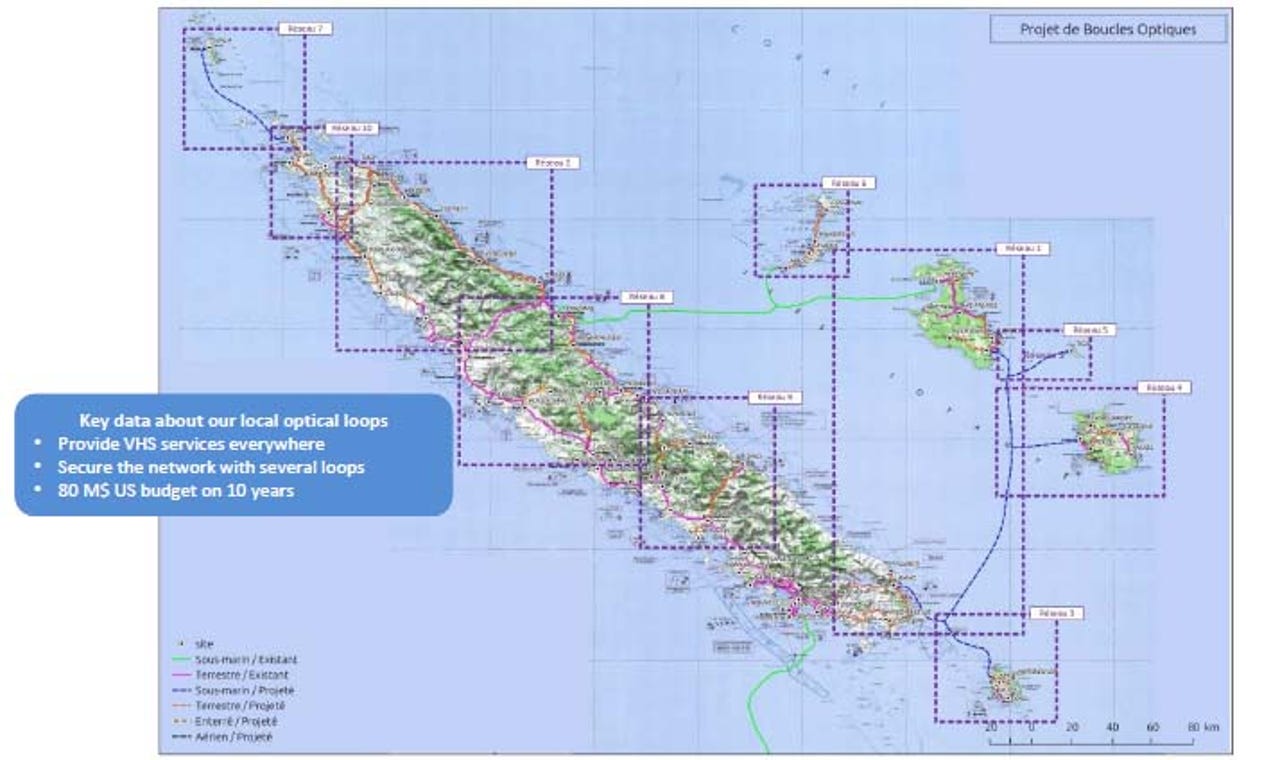NBN fibre to the world: New Caledonia

The French collectivity of New Caledonia, located 1,200km east of Australia, is set to get fibre to the home to approximately 65,000 premises starting at the end of 2015.
The collectivity's incumbent telecommunications provider OPT and the government will invest approximately AU$300 million over the next few years in rolling out 4G services and fibre to the premises across the island to its 260,000 residents, with launches set for early this year.
New Caledonia currently has 3G services to almost the entire population, and ADSL services provided by OPT to 76 percent of households.
Philippe Gervolino, OPT's Directeur Général Adjoint en charge de l'Aménagement, told ZDNet on his visit to Australia for the APNIC 38 conference in Brisbane last year that OPT and the government had decided to invest in broadband due to the limitations associated with the existing ADSL network.
"Most of our ADSL is reaching 6Mbps [but customers are] looking for more than 16Mbps. That's why we need to go to fibre," he said.
Read more: Fibre around the world
"More than 100 TV channels ... goes through ADSL, but you can't put HDTV on 16Mbps. It's too short for multi-connected households with the father, the mother, the three kids. So you need to step to fibre."
Gervolino's comments come in stark contrast to the government-commissioned report (PDF) put together by fibre broadband critic Robert Kenny and Communications Chambers as part of the National Broadband Network (NBN) cost-benefit analysis, which estimated that the median Australian household would only require 15Mbps in 2023.
While 4G will go live in the first quarter of 2015 in New Caledonia, Gervolino said there would be a technical pilot of fibre to the premises in the second quarter, followed by a commercial pilot with ISPs in the third quarter, with services launched in the fourth quarter of 2015.
The rollout is set to take five years, and he said that customers would be asked whether they want fibre installed at the time of construction. He expects between 70 and 80 percent to take up the fibre when offered by OPT.
"Most of them surely are going to. We cannot wait until 100 percent of them go for it. We need to deploy the network block by block, and we cannot put the team there for 10 years," he said.
Gervolino said OPT is allowing between eight and 10 years for every premises to move over to fibre, and, after that time, the company would look to cease operations of its copper network.
"We cannot afford the two networks. We can't sustain the two networks, so we've fixed a deadline to switch from one to the other," he said.
"Ten years will be the maximum, because until you've got both the copper and fibre, you need to deploy two teams to deal with it. When we launch the fibre system, we will connect the guys that want to. New customers won't have a choice. They will have to come on the fibre," he said.
OPT will also work with the builders in New Caledonia to ensure that by January 1, 2016, all new buildings will be equipped with fibre.
The fibre will be deployed both aerially and underground, with a focus on getting services out across the 18,576 square kilometres of the collectivity to avoid "digital fracture", Gervolino said.
"Nouméa and the suburbs. That is the easy job. We need to provide broadband services everywhere in New Caledonia. If not, the population will still come from the bush to Nouméa, and this is not a good solution," he said.
"We are trying to build a new development city in the north, where you've got the new mining factory. You need to have the services where you live."
New Caledonia, in parallel, would also be looking to secure a second subsea cable for the region in addition to the Sydney-to-Nouméa Gondwana 1 cable that was installed in 2008.
"We absolutely need a second cable going somewhere else," he said.
The company is assessing locations such as Fiji or New Zealand as potential landing points for the second cable, and will commence a feasibility study in the first quarter of 2015, with $40 million in funding.
